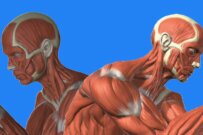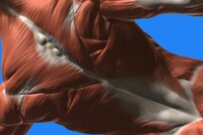The iliotibial band is the ligament that runs down the outside of the thigh from the hip to the shin, helping stabilize and move the hip and knee joints, as well as preventing dislocation.
When the IT band isn’t working properly, movement of the knee (and, therefore, running) becomes painful. The IT band can tighten and rub across the hipbone or the outer part of the knee. This happens each time the knee is bent or the hip flexed. This condition is known as iliotibial band syndrome and is particularly common in runners, cyclists, and people who participate in other aerobic activities.
Symptoms of iliotibial band syndrome include: pain on the outside of the knee or hip, snapping pain in hip as the iliotibial band snaps back and forth over the point of the hip, pain that generally disappears as the band is stretched out and becomes more flexible, and pain that improves with rest. ITBS can usually be diagnosed without complicated tests. A healthcare professional will take a medical history, with a focus on previous injuries, and X-rays may be taken to make sure that there are no previous injuries that could be compounding the problem. A doctor will examine the knee and will look at the entire leg to rule out other conditions since pain on the outside of the knee can be caused by conditions other than ITBS.
Therapeutic massage, proper conditioning, warm-up and stretching prior to exercise, wearing appropriate shoes for activity, avoiding crowned surfaces or too much running around a track, and shortening the running stride can help prevent the onset of ITBS. Iliotibial band syndrome is treated with rest, ice, compression, Neuromuscular massage, medications that relieve swelling and pain, and stretching and strengthening exercises that strengthen the hip abductors (outside leg muscles and gluteus medius). Steroid injections are sometimes helpful while surgery is rarely needed to correct IT band problems.





